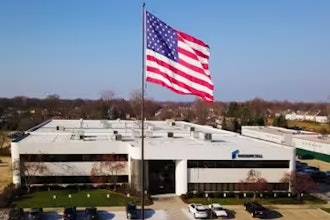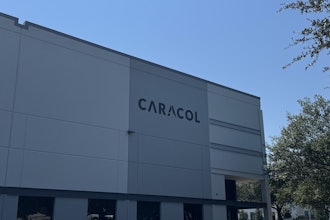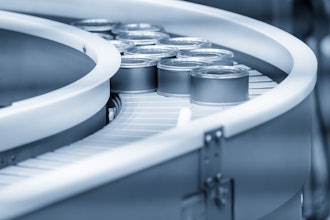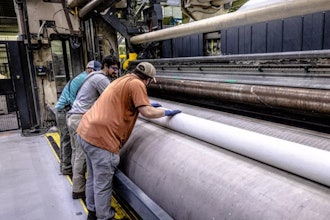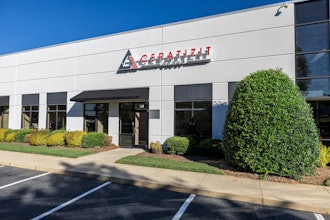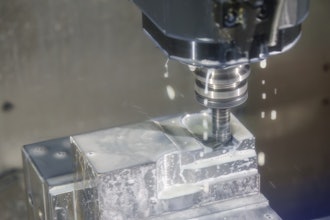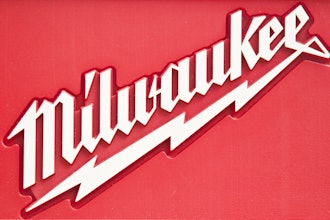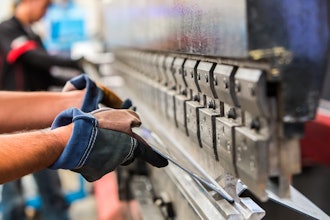This is an Illinois Exchange story shared by The (Galesburg) Register-Mail. (AP) — The sight of construction equipment perhaps sparks chatter among those who pass the ethanol plant in Galva. The activity proves worth conversation. This corn-growing region of Illinois will claim home to a first-of-its-kind technology to extract zein, a highly valuable corn protein that will be used for food and pharmaceutical products. "We're just now coming out from underneath the radar," says Philip Shane, director of zein operations and marketing for Big River Prairie Gold LLC. "We've been very quiet and secretive about it."
Following a lengthy permit process, construction of a zein extraction facility began September 15 near the highly visible U.S. Highway 34 boundary of the Big River Resources ethanol plant in Galva. The 15,000 square-foot building should be complete in May. The expansion at the Galva ethanol plant represents a joint venture between Big River Resources LLC, which produces ethanol and co-products from corn, and Prairie Gold Inc., a technology and developmental company with patented technologies to produce high-value corn products.
The expansion emits positive news for local development, including 15 new jobs. Yet, the facility in the grand scheme represents a monumental venture. The practice of zein extraction is rare. Shane knows of only a facility in Massachusetts that extracts zein proteins domestically. Until now, an expensive, energy-intensive extraction process had stifled zein's potential. With first-of-its-kind technology, the Galva site will implement an extraction process that requires less energy, no chemicals and no fermentation that introduces off flavors. The formed venture, Big River Prairie Gold LLC, will call the end product "Amazein," a trademarked name that combines maize (corn), zein the protein, and amazing.
"It is a tremendous product, it is an exciting technology, and I've spent a long time getting from the bench top as a researcher to a commercial facility like Big River's ethanol plant," said Shane, also president of Prairie Gold Inc. "Now we can see the light at the end of the tunnel. We're excited that the plant is going up and equipment is being delivered. We'll be really excited when we can push a button and turn it on."
Pronounced "zayne," zein proteins make up about 40 percent of the total protein in corn, Shane said. After extraction, zein appears as a fine, pale-yellow powder between the consistency of sugar and flour. The protein can be used for biodegradable plastics, paper coatings, food packaging, antioxidants, medical devices, pharmaceutical products, food and cosmetics. Specifically, think about the glossy finish on magazines, coatings on pills or even the glaze on candies, such as M&Ms.
Extraction of zein proteins provides a new, plant-based option for these industries and often an alternative to oil-based products, Shane said. Specifically, the Galva facility will produce a high-quality, food and pharmaceutical-grade zein protein. Zein proteins are not new, but new technology may finally give it a chance for a larger market presence. Zeins were discovered in the 1800s and marketed more in the 1950s, Shane said. He mentioned that a facility in Peoria once extracted zein proteins decades ago, yet the introduction of less expensive oil-based product alternatives dropped most zeins from the market.
"I believe the market hasn't expanded because of the pricing of the current zein product and the way it is produced," he said. This new venture hopes to change that.
Big River Prairie Gold calls the Galva extraction facility a demonstration plant. It will extract from just 600,000 bushels of corn per year, the amount of corn produced on 3,000 to 4,000 acres. This represents less than two percent of Big River's annual usage of 43 million bushels.
The demonstration facility intends to perfect the new technology, build up the market and eventually construct a second plant much larger in years to come, Shane said. The technology was developed at the University of Illinois using the patented COPE process and funded in part by the Illinois Corn Marketing Board, Shane said. Prairie Gold has an exclusive license from the U of I for the technology. In fact, the company holds seven patents on the technology between the United States and Canada.
For the first time, this technology allows zeins to be extracted at the "front end," prior to any processing except for the grinding of whole, raw corn, Shane said. Extreme processing is not used, a benefit of the new technology. The process requires water, corn and alcohol, the latter two provided by the connecting ethanol plant. After extraction, the corn returns to the plant to produce ethanol because the starch component, which is necessary for ethanol production, remains unaffected.
The zein proteins will take away some production of livestock feed. Yet, only 300 tons of feed, known as dried distillers grains (DDGs), will be reduced, says Jim Leiting, general manager of Big River Resources LLC. This proves practically unnoticeable in the ethanol plant's 342,000 tons of annual production. Shane has fielded interest from customers all over the world: Australia, Taiwan, Japan and Europe are just a few. The company hopes to market most of its product within the United States.













